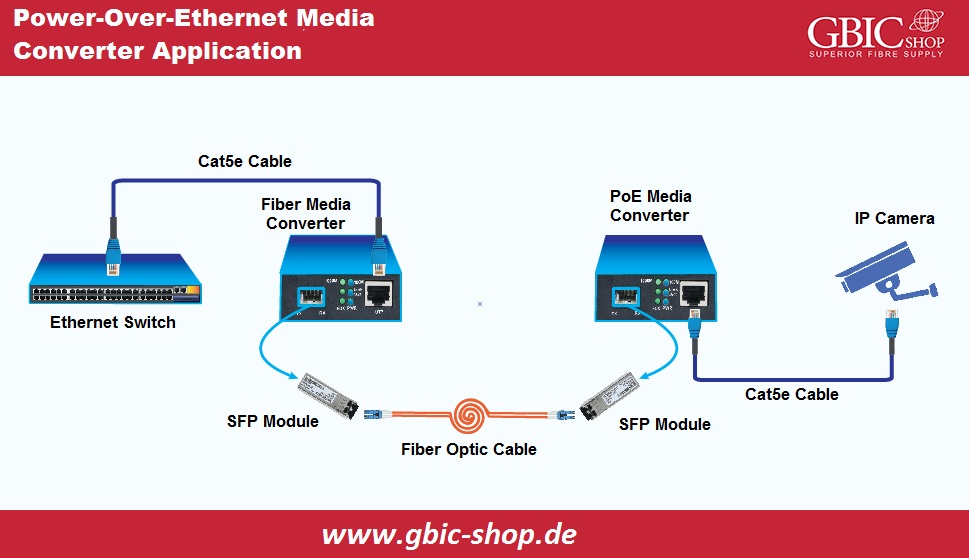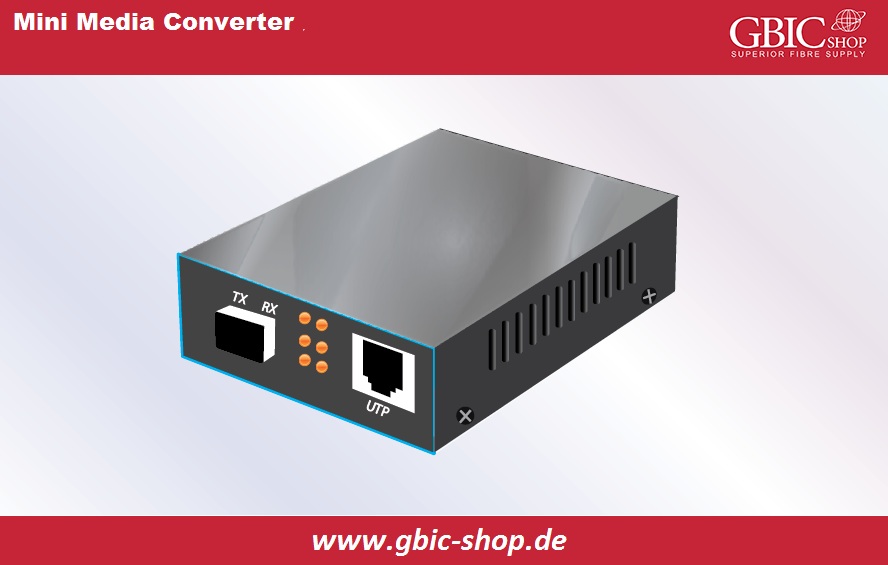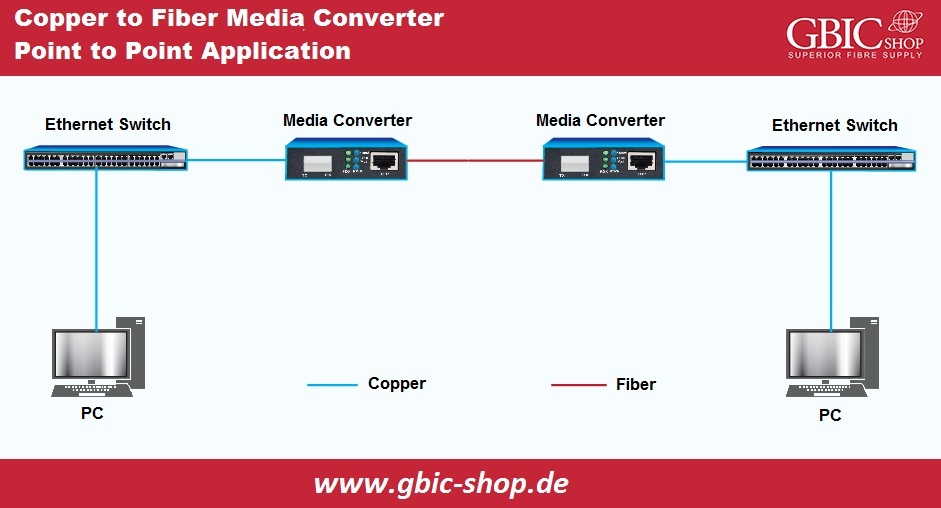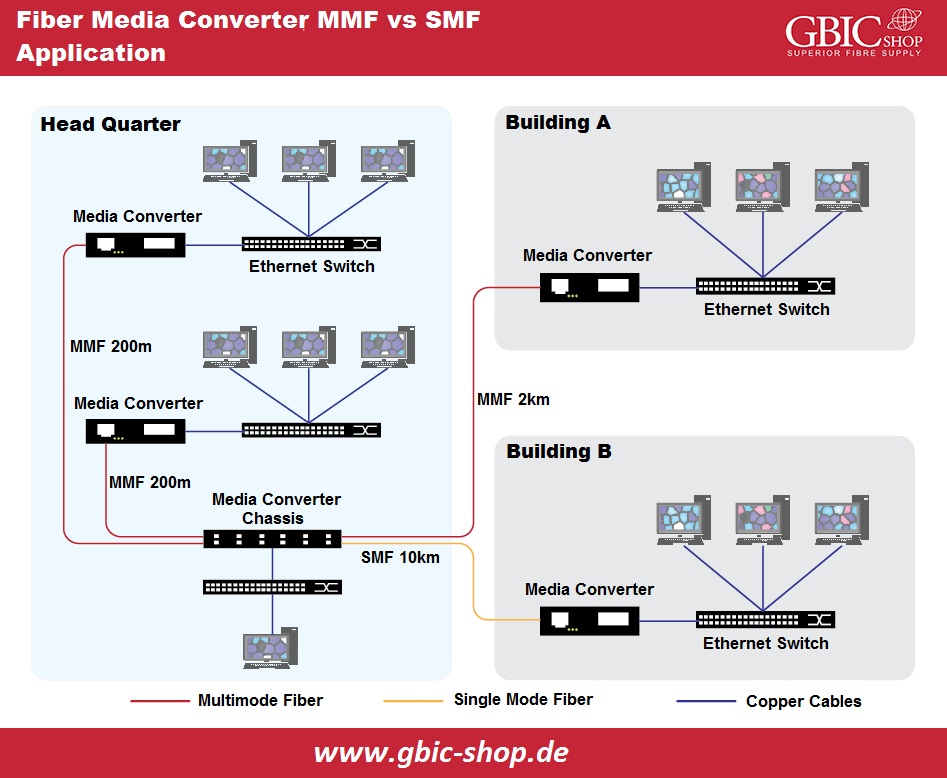A media converter is a cost-effective and flexible solution for increasing transmission ranges using the current cabling infrastructure. We widely use media converters in MAN data and access transport services for enterprising consumers to understand fiber to fiber or copper to fiber links. How do you select the best ones with different media converters within the market? Here we will describe common types of media converters and application conditions to guide you in making a good choice.
Types of Media Converters and Selection Standard:
Different media converters support data rates, multiple network protocols, and connector and cabling types.
By Functions:
We have many media converters like managed, unmanaged, standalone, PoE, mini, industrial, chassis-based media converters, etc.
Managed VS Unmanaged Media Converter:
Unmanaged fiber media converter is plug & play, creating it uncomplicated to troubleshoot and install for newbies. An unmanaged fiber media converter enables accessible communication with more devices. However, it does not possess management and monitoring functions. These converters are suitable for a campus or small company when we need simple usage and management. Managed fiber media converter contains the task of remote management, fault detection, and networking monitoring, supporting network managers to control the bandwidth, data, and traffic. However, they are expensive. For complex conditions such as enterprise networks and big data centers, managed fiber media converter is preferable for excellent management, reliability, and security.
PoE VS Non-PoE Fiber Media Converter:
PoE (Power over Ethernet) fiber media converters attain cost-effective and reliable fiber distance expansion for PoE-PD (powered devices), giving power to networking devices above the copper cable that we use for data. PoE fiber media converter strengthens devices such as IP cameras, IP phones, videoconferencing equipment, and wireless devices above copper cabling. So, we widely use it for connecting WAP (wireless access point) and security cameras in some unreachable places to a 1GB backbone. We have shown an example of a PoE fiber media converter in the following picture.

Chassis-based VS Standalone Media Converter:
Chassis-based fiber media converters involve a chassis that houses lots of converters and several independent fiber media converters. Chassis-based fiber media converters are suitable for management when we need a lot of converters in a vast network. So, we use them in excessive-density spaces like computer rooms or data centers. Standalone fiber media converters are easy to implement and are compact, saving expenses and room. These converters are best for implementation in restricted space environments like distribution boxes or telecommunication cabinets.
Industrial VS Commercial Media Converter:
We have specially designed Industrial fiber media converters for harsh conditions providing highly systematic media converters within severe temperatures, i.e.-40°c to 85°c, vibration, and high-shock. We commonly use them in traffic management, building automation, weather tracking, gas and oil mining, drilling, and other outdoor and industrial applications. On the other hand, we have designed commercial fiber media converters -10°c to 55°c temperature for data centers and typical office environments with ambient temperature control.
Mini VS Standard Fiber Media Converter:
Because of its compact size, huge network environments have welcomed the mini fiber media converter. Mini fiber media converters' chips are better compared with standard converters. Its advantage is the DIP switch function, which can fulfill different needs.

By Communication Media:
There is fiber to fiber and copper to fiber media converters, which we can further divide.
Copper to Fiber Media Converter:
Copper-to-fiber converters provide links to copper Ethernet devices above extended ranges through an optical fiber connection, which keeps data safe from interface and noise. Moreover, it future-proofs some networks with extra bandwidth capability. Copper to fiber converters includes Ethernet ones enabling connectivity for Fast Ethernet, Ethernet, 10 Gigabit, and Gigabit Ethernet devices; Time Division Multiplexing (TDM) providing an extension to specific TDM telecommunication protocols copper links; serial to fiber ones enabling fiber development for sequential protocol copper links. Copper-to-fiber converters are suitable for point-to-point links.

Fiber to Fiber Media Converter:
Fiber-to-fiber converters can enable connectivity between single-mode and multimode fiber, single fiber, and dual fiber and help wavelength conversion. We typically require single-mode to multimode converters when inexpensive legacy utilizes MM ports; however, we need connectivity for SM equipment. The single-mode fiber media converter can attain an extensive range from 2 kilometers to 100 kilometers, appropriate for connecting campus backbones or enterprise networks with Bandwidth-hungry apps. A multimode fiber media converter can get a transmission range of 2 kilometers, which we often deploy in short-range transmission to expand LANs above fiber cable. In the picture below, we deploy single-mode and multimode media converters to connect the primary data center and two buildings, spanning 2 kilometers above MMF and 10 kilometers above SMF.

Conclusion:
Fiber media converters are an inexpensive solution to connect fiber and copper cables within a network. They can vastly increase the transmission ranges and are also uncomplicated and flexible. As for various applications, we have several kinds of fiber media converters; it is best to think about the present and upcoming network demands before choosing the correct media converters.
 English
English
 Deutsch
Deutsch
 Espaniol
Espaniol










